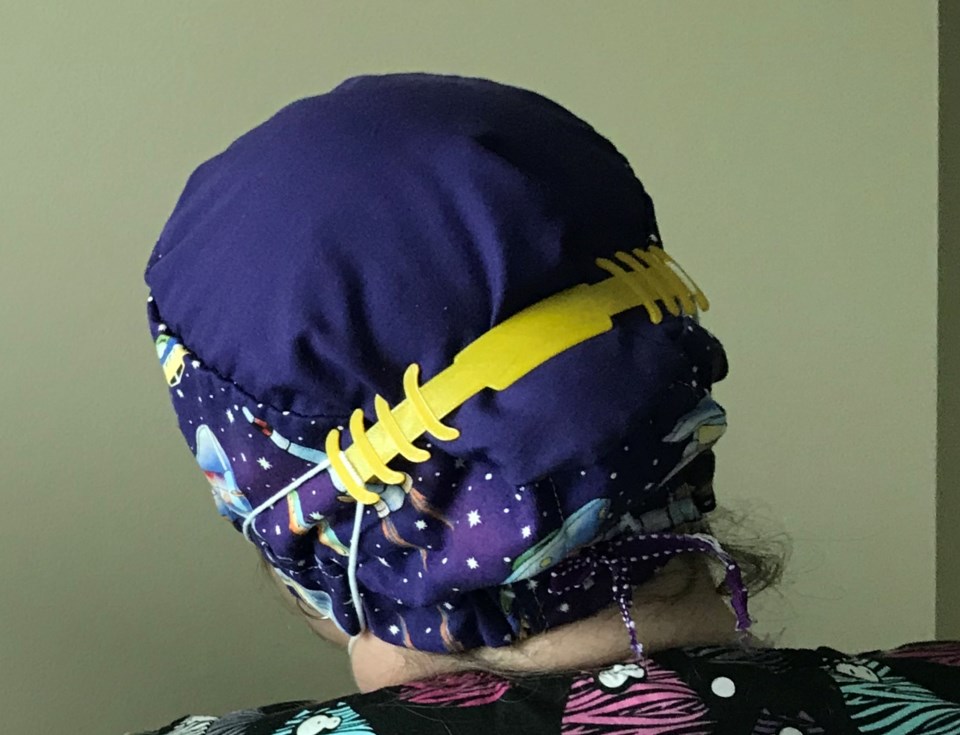Wearing personal protection equipment for the better part of a 12-hour shift is no fun for heath-care workers.
In their fight against COVID-19 they have to wear cloth head coverings, masks that cover their mouths and noses, shields or goggles to protect their eyes and face and gowns that provide an essential barrier to prevent germs from spreading.
It can be hot and sweaty under all that gear and sometimes even painful. The rubber straps of equipment worn to cover the face wrap around the ear and over time that causes bruising.
Thankfully, there are some creative fixes to prevent that being made right here in Prince George. Trevor Elkey has found a way to make use of his 3D printer to take some of the pain out of the job for hospital staff at UHNBC.
He's making ear savers, a six-inch piece of biodegradable plastic worn behind the head that grips the elastic straps and essentially takes the ears out of the equation.
"Somebody came up with an ingenious idea so the elastic wraps around this headband and it is adjustable," said Elkey, 43, who dabbles in making things with his printer when he's between shifts from his full-time job as a CN Rail locomotive engineer.
"If we're able to make it a little bit easier for them, a little bit more comfortable to do their job. I don't envy someone who has to be fully gowned up with masks all day long every day, especially if you're getting bruising around the ears."
Elkey bought his 3D printer five years ago to make plastic parts for this Star Wars costumes. He's among a bunch of creators in the Facebook group, BC COVID-19 3D Printing Group, and used those connections to download a design pattern to make the ear savers.
"We all kind of keep in touch with one another and it was started in the Vancouver health region," he said. "They had a serious shortage of faceshields and the 3D printer crowded decided, 'Hey, we can make some of those up for you,' and they mobilized a small army of printers and it went from there to these ear savers."
It takes about 10 minutes for Elkey to make one ear saver and he can set the machine to print three in each half-hour session. It took him the entire weekend to make 100 of them.
"The need for them is an ongoing thing," he said. "It's all across the province, all of the health authorities are covered through this group right now. We're all making the exact same two pieces (ear savers and shields)."
He said several people in the city he knows of are using their sewing machines and fabric to make masks for hospital workers.
3D printers have been around since the '60s, when the auto industry began using them for making prototype car body parts and over the past few years they've become much more affordable for consumers. Elkey said the printer he bought for $1,000 five years ago can now be purchased for $400-500 and some are as cheap as $150.
"There are very creative and imaginative people out there right now doing amazing things with them," he said. "Mine was sitting idle, not doing anything particularly useful. Now I'm able to utilize it now for this project to actually make a beneficial difference. I'm starting to engage other people I know in the community who have 3D printers to help as well."



